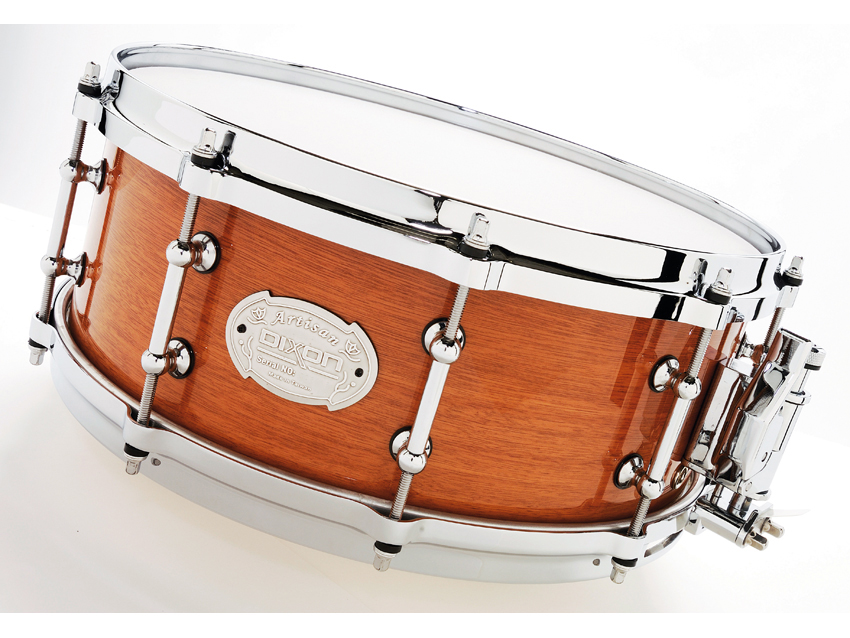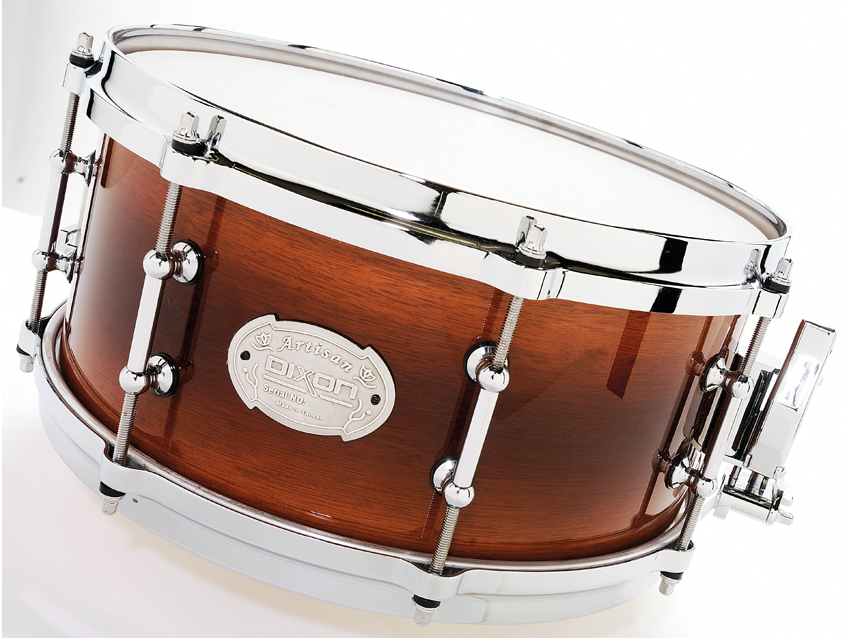MusicRadar Verdict
These are fabulous drums, full of the qualities that make Brady drums so unique while also offering superb value. They can only bring welcome elevation to the Dixon brand and could also benefit Brady by creating a presence away from the premium end of the market it occupies without undermining its own status.
Pros
- +
Flawlessly finished. Quality Evans heads included. As good as some Brady drums costing twice the price.
Cons
- -
Not a lot, all things considered.
MusicRadar's got your back

Dixon Chris Brady Snares

Dixon Chris Brady Snares
Some collaborations are easy to predict, although few would have forecast the coupling of Dixon and Brady. While both companies are respected in their own right, they occupy different territories within the drum-making world: Brady is renowned for its beautiful handmade drums while Dixon has a solid reputation for producing dependable hardware and drums.
Dixon has been making concerted efforts lately to reposition itself higher up in the marketplace, launching, among other things, its exotic-shelled high-end Artisan series in 2007. In the light of these new developments, a Brady-influenced snare drum underlines Dixon's aspirations to be a contender further up the ladder.
Build
You're probably wondering how a big company like Dixon has managed to achieve a close association with a fiercely independent brand like Brady. Well, as the cliché goes, it's a small world, and the president of Dixon (Joseph Chen) has a friendship with Chris Brady that stretches back over 25 years. Joseph has always been a supporter of Brady drums, and when he asked Chris Brady to help design some new Dixon snares the answer was an immediate 'Yes'.
"What makes it an appealing proposition to the drum-maker is its hardness. Much harder than birch or maple, it also leaves walnut, cherry and even oak behind".
The drums that have been created bear a close resemblance to kosher Brady drums. However, they aren't copies of Brady drums made by Dixon - they are Dixon drums that have been designed by Chris Brady. This is an important distinction, as Dixon are not in the business of trying to replicate Brady's labour-intensive manufacturing process; rather this is an attempt to produce high quality snare drums that share some of the features that make Brady drums so special, at reasonable prices.
There are three snare drums available, in sizes of 14"x6½", 14"x5½" and 13"x6". The chosen shell material for the drums is rose gum, an indigenous Australian hardwood. While you'd expect Chris Brady to suggest an Australian wood, Dixon was keen for these drums to offer an alternative wood to the existing Dixon range of snares, which is predominantly maple-shelled. Rose gum is an attractive wood, varying in colour from pink to redish brown.
What makes it an appealing proposition to the drum-maker is its hardness. Much harder than birch or maple, it also leaves walnut, cherry and even oak behind. Only ash and that trusty Brady staple, jarrah, are denser.
The shells are all 5.4mm thick and made up of nine plies. Inside they are sanded to a smooth finish and the 45-degree bearing edges are accurately cut. Externally, the shells are finished in a choice of two lacquers that, in reality, offers three options: self explanatory Natural Lacquer (14"x5½"), or Natural Burst Lacquer, which is a light-to-dark fade with the order of the bands differing between the drums (the 14"x6½" is dark/light/dark while the 13"x6" is light/dark/light).
Want all the hottest music and gear news, reviews, deals, features and more, direct to your inbox? Sign up here.
Like real Brady drums, the finishes are flawless and mirror-deep.
The shell hardware consists of tube lugs that are all but indistinguishable from those found on Brady drums, with the 14" drums being equipped with 10 and the 13" drum sporting eight. Snare tensioning is controlled through a Dunnet throw-off and the snare wires are of a similarly high quality.
"We have to admit that our first reaction when learning of the existence of these drums was one of mild incomprehension. We're delighted that our prejudices have been comprehensively trashed".
The most obvious area where the Dixon drums diverge from the Brady formula is in the fitting of die-cast hoops, which the Brady company actively discourages on its own drums. On this component, Dixon felt that the added focus that die-cast hoops bring (to cross-stickings and rimshots in particular) benefited these snare drums enough to justify their inclusion.
Hands on
The emphasis on quality extends all the way to the heads, with Evans G1 coated or Power Centre Reverse Dot batters fitted across the drums and 300 Hazy resonants in place below. With the drums' illustrious origins it's hard not to compare them with Brady drums costing twice the price, but it's a comparison that would find them in favourable light.
The 14"x5½" model is a tight, snappy, loud drum that ticks all the boxes, straight out of the box. Tuned up, it gives a precise, funky response, while slackening it off reveals a fatter, altogether dirtier sound. The 14"x6½" drum offers a beefier take on things, delivering a substantially thicker and crunchy performance. Standing out from the two 14" drums, for me, is the 13"x6" model. Possessing a supremely sharp level of attack, it has an extra 'oomph' that makes it utterly irresistible. Fair dinkum indeed.